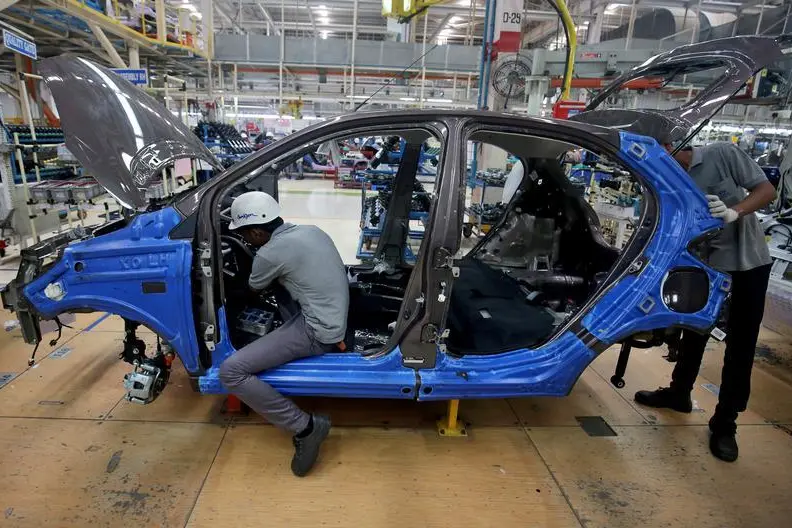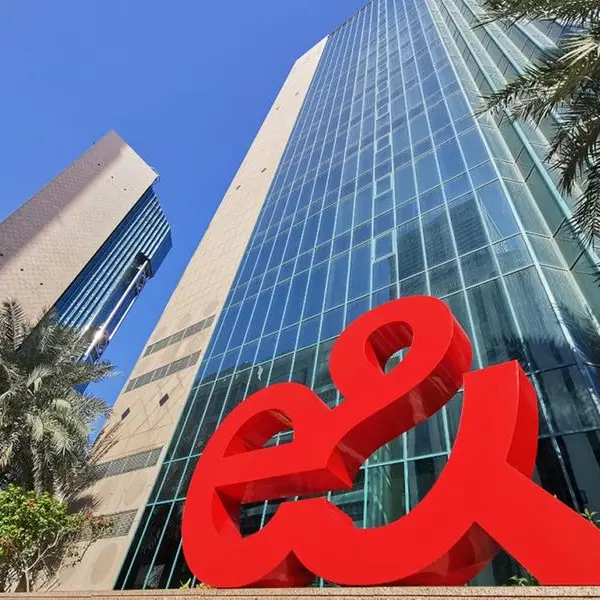PHOTO
MUMBAI - As signs of a rising middle class go, not much beats the car. So the dramatic slowdown in India’s automotive market is cause for concern. The number of vehicles sold is slumping at one of the fastest rates since 2008. Tata Motors, which on Thursday reported a sharp fall in domestic passenger car sales for the most recent quarter, only adds to the gloom.
Sales of cars, utility vehicles and vans fell by almost one-fifth in the three months to June compared to the same period a year earlier, according to the Society of Indian Automobile Manufacturers. Commercial vehicle purchases also declined by a double-digit annual percentage rate over the past two months. India’s GDP cooled to 5.8% growth in the last quarter, but that doesn’t justify the slump. After gaining market share in domestic passenger vehicles last year, Tata Motors says the industry has declined “sharply and significantly”.
It’s not that a wealthier India won’t buy more cars, but that other things have sent auto sales off course. Higher taxes and new insurance rules have raised the price of ownership. Rising fuel prices have been a turn-off too. Those factors have made it more attractive for Indians, especially in cities like Mumbai with a parking shortage, to turn to ride-hailing companies like Uber and larger local rival SoftBank-backed Ola, now present in 230 cities.
Weak sales can also reflect other problems. Some property developers were giving away cars before real estate hit the skids. The introduction of a nationwide goods and services levy, which makes it harder to hide income and dodge taxes, has made life tougher for small traders: 70% of the auto loan portfolio of the $90 billion HDFC Bank comprises self-employed people, notes one analyst at Macquarie.
A final drag comes from “shadow lenders” that have served those otherwise deemed too risky. These had a 30% share of auto loans in December, according to the Reserve Bank of India, but the default of one such lender last year has led to a liquidity squeeze, forcing others to reduce their risk-taking.
Look further out, and there are still a lot more cars in India’s future. As few as 32 residents in every 1,000 own one, says government think-tank NITI Aayog. That means investors who have sold car stocks – Tata Motors' shares are down one-third in the last three months – might have sold too soon. It’s clear, though, that the road is more indirect than it once seemed.
CONTEXT NEWS
- India’s Tata Motors on July 25 reported a net loss of 37 billion rupees ($536 million) in the three months to the end of June, compared to a loss of 19 billion rupees a year earlier.
- Overall sales of passenger vehicles in India, including cars, utility vehicles and vans, fell 17.5% to 225,732 in June, compared to the same period a year earlier, marking the third consecutive month of double-digit decline, according to the Society of Indian Automobile Manufacturers.
- Sales of commercial vehicles fell 12.3% year-on-year to 70,771 in June, the second consecutive monthly double-digit decline.
- For previous columns by the author, Reuters customers can click on
(Editing by John Foley and Karen Kwok)
© Reuters News 2019












